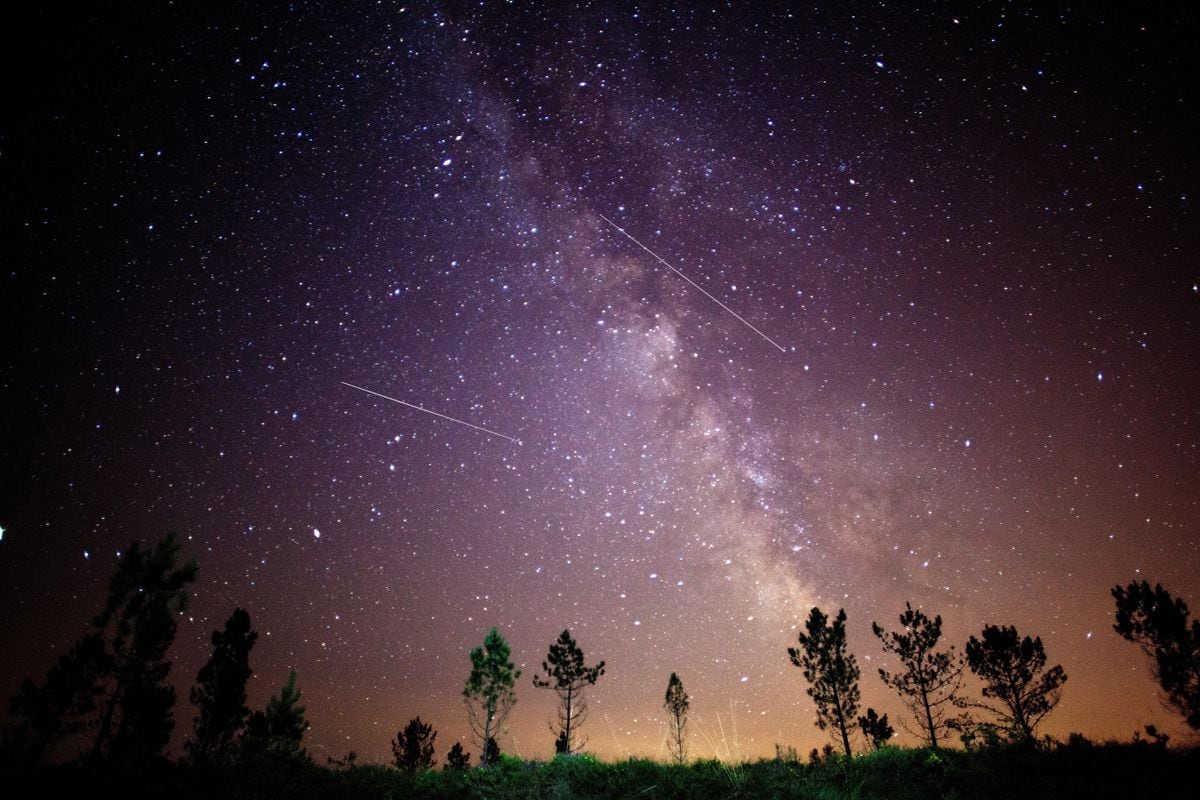If we identify a star and want to know its age, the first thing we have to do is find out if it is isolated or if it is part of a cluster or a stellar association, which are two types of groups that can contain from hundreds to millions of stars.
To determine age, we rely on theoretical models that tell us how stars evolve and what physical properties such as temperature, luminosity and radius they would have depending on how long they have been around.
More information
Are there stars being born right now?
The main method of determining ages is a very graphical means that we call a color-magnitude diagram.
On the X axis we put the color of the star and on the Y axis we put the magnitude of its brightness.
Stellar populations have a particular appearance according to their age, which is reflected in their position in these diagrams.
That is why it is important to know if the star is in a cluster or if it is isolated.
If it is in a cluster, the simplest thing is to draw the color-magnitude diagram of the cluster.
Most of the stars will be on a diagonal line of the diagram, which we know as the main sequence.
But at the top, which is where they are the brightest, some stars separate and have redder colors.
This, from the point of view of physics, means that these stars have exhausted the hydrogen in their core.
Hydrogen fusion is what powers them and gives them their energy for most of their lives.
During this stage, the stars are in the main sequence on the color-magnitude diagram.
When the hydrogen is depleted they begin to expand and evolve towards cooler temperatures and redder colors.
The starting hypothesis is that all the stars in the cluster have formed at the same time, so they have the same age.
What happens is that not all evolve in the same way.
The more massive a star is, the more efficient the fusion of hydrogen inside it is, so they burn their energy faster and deplete it sooner.
When this happens, the stars enter a new phase of their evolution and leave the main sequence diagonal of the color-magnitude diagram;
It is what we know as a turning point.
Depending on where this turning point is located, the cluster will have one age or another.
What we measure is the age of the cluster, but, as we start from the hypothesis that they all formed at the same time, if we have the age of the cluster, we have the age of each of its stars, even though they are not all in the same phase of his life.
If what we want is to know the age of an isolated star, the methods depend on how far away or how close it is.
If it's too far away, we can do very little.
The solution is to consider it as part of a larger population, even if it is not a cluster.
One possibility would be to think of part of the Milky Way's disk or halo as a stellar population and apply the color-magnitude graph method to it.
The Gaia space observatory allows us to better define these populations, since it allows us to identify subgroups of stars in the galactic disk and halo by moving together.
If the star is very close, we have different methods.
One of them is to find out if we can detect lithium in its spectrum.
Lithium runs out very quickly, so if a star shows lithium in its spectrum it tells us that it is very young.
Another method is to look for oscillations in brightness.
Stars are not static spheres, but undergo periodic expansions and contractions that cause their brightness to change.
And there are space missions dedicated to studying these variations in the brightness of stars.
With this and with models of the stellar interior, the period of these oscillations can be linked with the stratification of layers of the stellar interior.
And the stratification of layers tells us the age of the star.
And the last case is that of the Sun. Here we have a little more help because, in addition to being able to study it in great detail, we are able to date the date of its formation thanks to the composition of the meteorites.
Before the formation of the Sun, a nearby supernova explosion released many heavy elements that went into the formation of our star and the entire Solar System.
Meteorites reflect the chemical composition of those elements released by the supernova.
The methodology is similar to the carbon 14 test. As we know the chemical composition and the speed with which certain radioactive isotopes decay, when studying the composition of meteorites we can put a maximum age of the Sun: it had to form after the supernova because, otherwise, it would have stopped the formation of the solar system.
Miriam García
is a doctor in Astrophysics and researches massive stars at the Center for Astrobiology (CSIC-INTA)
Question sent via email by
Rosario Valenzuela Generoso
Coordination and writing:
Victoria Toro
We respond
is a weekly scientific consultation, sponsored by the
Dr. Antoni Esteve Foundation
and the
L'Oréal-Unesco 'For Women in Science' program
, which answers readers' questions about science and technology.
They are scientists and technologists, members of
AMIT (Association of Women Researchers and Technologists)
, who answer these questions.
Send your questions to us at
nosotrasrespondemos@gmail.com
or via Twitter #nosotrasrespondemos.
You can follow
MATERIA
on
,
and
, or sign up here to receive
our weekly newsletter
.









